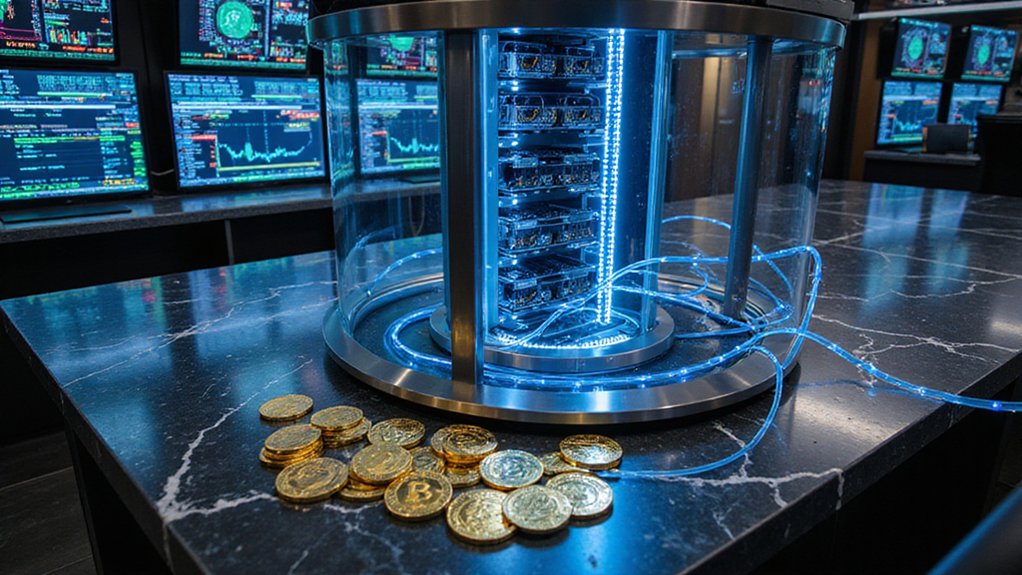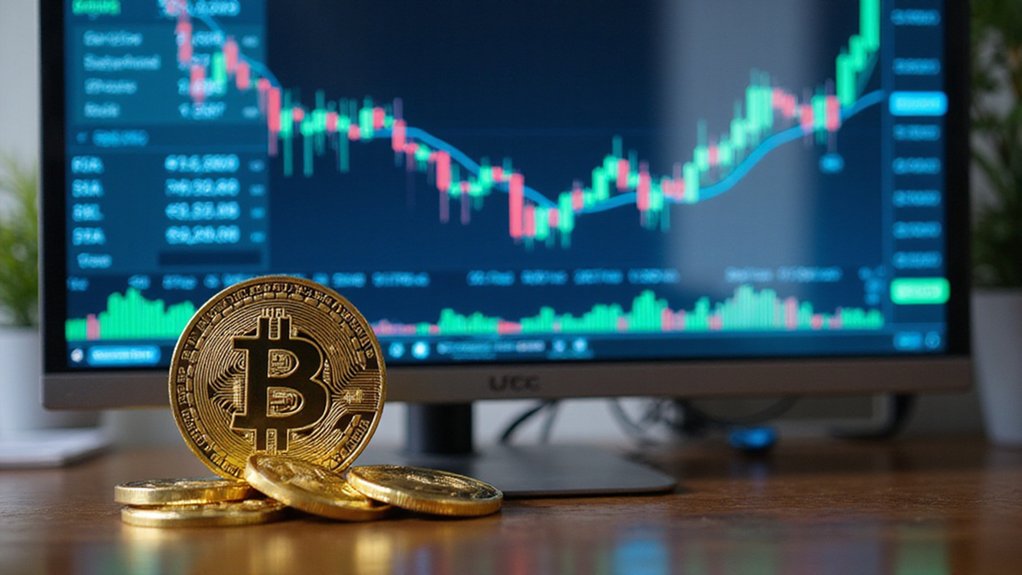Centralized cryptocurrency exchanges function as traditional intermediaries managing digital asset trading through custodial wallets and unified governance systems. Users surrender private keys for convenience, accessing fiat-to-crypto pairs, margin trading, and high liquidity pools while submitting to KYC protocols and regulatory oversight. These platforms ironically transform revolutionary peer-to-peer technology into conventional institutional structures, complete with customer support and dispute resolution mechanisms that fundamentally contradict cryptocurrency’s original disintermediated vision—though their operational complexities warrant closer examination.

The centralized cryptocurrency exchange represents perhaps the most paradoxical institution in the digital asset ecosystem—a traditional intermediary facilitating trades in what was originally conceived as a peer-to-peer, disintermediated financial system.
Revolutionary peer-to-peer technology wrapped in the very institutional frameworks it was designed to replace.
These platforms function fundamentally as digital stock exchanges, complete with the regulatory oversight, custodial responsibilities, and single points of failure that Bitcoin’s pseudonymous creator presumably sought to eliminate.
Operating under unified governance structures, centralized exchanges manage every aspect of user interaction through custodial wallets and centralized order matching systems.
Users surrender control of their private keys (and, consequently, their assets) in exchange for the convenience of intuitive interfaces, customer support, and liquidity pools that dwarf most decentralized alternatives.
The irony remains palpable: revolutionary technology packaged in decidedly conventional institutional frameworks.
These platforms implement thorough Know-Your-Customer and Anti-Money Laundering protocols, collecting identifying information with the thoroughness of traditional financial institutions.
Such regulatory compliance—varying considerably across jurisdictions—serves dual purposes: legitimizing cryptocurrency trading in mainstream financial contexts while simultaneously undermining the pseudonymous principles originally embedded in blockchain technology.
The operational advantages prove compelling despite philosophical contradictions.
Centralized exchanges offer fiat-to-crypto trading pairs, margin trading capabilities, and access to extensive cryptocurrency portfolios through familiar order book systems.
High liquidity ensures efficient price discovery and minimal slippage, while advanced trading features cater to sophisticated investors seeking derivatives and leverage options.
Security measures reflect the considerable responsibility of managing billions in user assets.
Two-factor authentication, cold storage solutions, and regular security audits attempt to mitigate risks inherent in centralized architectures.
However, the custodial model creates attractive targets for hackers and introduces counterparty risk absent in self-custody arrangements.
The technological infrastructure supporting these platforms requires robust server capacity and sophisticated matching engines to handle millions of transactions efficiently.
Integration with traditional banking systems enables seamless fiat conversions, though such connections necessarily subject exchanges to conventional financial regulations and potential government intervention.
When evaluating these platforms, users must consider critical factors including fee structures, security protocols, and the variety of cryptocurrencies offered.
Ultimately, centralized cryptocurrency exchanges succeed by providing accessibility and functionality that many users prioritize over ideological purity—transforming revolutionary technology into familiar, regulated products that traditional investors can comfortably navigate. The custodial model also enables platforms to facilitate dispute resolution between parties when conflicts arise over transactions or account issues. Despite significant setbacks like the FTX collapse in 2022, centralized exchanges continue to demonstrate market resilience with trading volumes maintaining their dominance over decentralized alternatives.
Frequently Asked Questions
What Happens to My Funds if a Centralized Exchange Gets Hacked?
When centralized exchanges face security breaches, users typically confront sobering realities: their funds may vanish entirely or become inaccessible for extended periods.
Recovery depends largely on the exchange’s financial reserves and willingness to compensate—hardly guaranteed outcomes.
Some platforms reimburse users partially (if they’re fortunate), while others simply collapse under losses.
Regulatory intervention occasionally provides relief, though victims often discover that cryptocurrency’s “be your own bank” ethos works both ways.
How Do Centralized Exchanges Make Money From User Trading Activities?
Centralized exchanges extract revenue primarily through trading fees—typically 0.1% to 0.5% per transaction using maker-taker models that reward liquidity providers while penalizing takers.
Beyond this bread-and-butter income stream (which constitutes roughly 90% of major platforms’ revenue), exchanges monetize listing fees from aspiring cryptocurrencies, skim percentages from staking and lending services, and offer premium subscriptions featuring reduced fees and enhanced tools for traders willing to pay for perceived advantages.
Which Countries Have Banned or Restricted Centralized Cryptocurrency Exchange Operations?
Several nations have imposed outright bans on centralized exchange operations, with China leading the charge through extensive 2021 prohibitions affecting trading, mining, and exchange activities.
Bangladesh, Nepal, Afghanistan, and Egypt maintain similarly restrictive stances, citing financial stability concerns.
Algeria, Bolivia, and the Dominican Republic have joined this regulatory resistance, while Indonesia and South Korea permit exchanges under heavy oversight—proving that regulatory approaches vary dramatically across jurisdictions.
Can I Recover My Account if I Lose Access Credentials?
Account recovery on centralized exchanges remains surprisingly feasible (unlike their decentralized counterparts discussed previously).
Users can contact customer support, leveraging identity verification protocols and backup authentication methods—two-factor codes, email verification, or phone recovery.
The irony? Centralized authorities that crypto enthusiasts often disparage become lifesavers when credentials vanish.
Recovery success depends on proper documentation, security protocol adherence, and the exchange’s compliance infrastructure.
Prevention through strong passwords and backup storage trumps recovery attempts.
What’s the Difference Between Market Makers and Market Takers on Exchanges?
Market makers provide liquidity by placing limit orders in the order book, earning profits from bid-ask spreads while absorbing overnight position risks.
Market takers execute immediate trades using market orders, matching against existing liquidity at prevailing prices.
The dynamic creates an elegant symbiosis: makers receive lower fees (or rebates) for their liquidity provision, while takers pay higher fees for immediacy.
Both roles prove essential for maintaining efficient price discovery and market depth.









